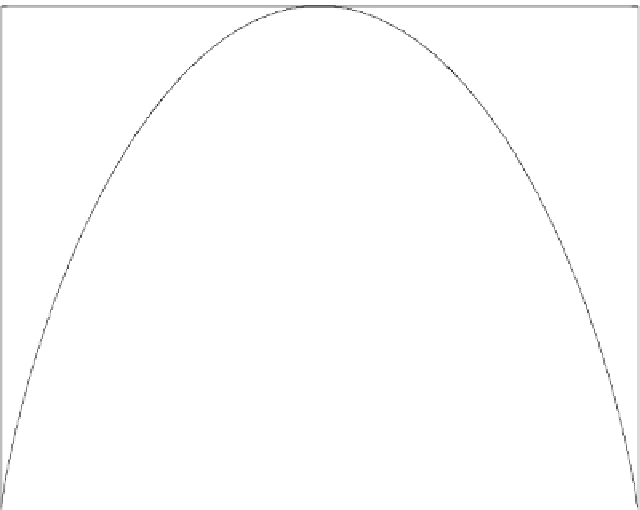Biomedical Engineering Reference
In-Depth Information
compute the fraction between bright and dark area give that the block neither belongs
to case 1 nor belongs to case 2. In other words, once we gather enough evidence to
determine both clusters are far apart, then the ratios of the number belong to both
clusters give us another clue about how well will the ACR algorithm segment the con-
tent within the block; if the clue suggests that the ACR algorithm could not segment
the content with confidence, then the quadruple block dividing scheme continues.
Let
n
(
C
j
) denotes total number of pixel reside in j-th clusters; in this specific
context,
j
=
1,
j
=
2. Inspired by Shannon Entropy, the Clustering Efficacy Ratio
CER (
n
(
C
1
)
,
n
(
C
2
)
) is defined as (
3.57
), where the range of the interval ratio
n
(
C
1
)
n
(
C
1
)+
n
(
C
2
)
is inclusive of unity but exclusive of zero, denoted as
n
(
C
1
)
n
(
C
1
)+
n
(
C
2
)
∈ (
01
]
.
n
(
C
2
)
n
(
C
1
)+
n
(
C
2
)
n
(
C
1
)
n
(
C
1
)+
n
(
C
2
)
n
(
C
2
)
n
(
C
1
)+
n
(
C
2
)
Total of
and
amounts to unity, hence
can be rep-
n
(
C
1
)
n
(
C
1
)+
n
(
C
2
)
n
(
C
1
)
n
(
C
1
)+
n
(
C
2
)
resented as
1
−
; as a result (
3.57
) is defined in terms of
as
represented by (
3.58
).
n
(
C
1
)
n
(
C
1
) +
n
(
C
2
)
log
2
n
(
C
1
)
n
(
C
1
) +
n
(
C
2
)
CER
(
n
(
C
1
)
,
n
(
C
2
)) =−[
(3.57)
n
(
C
2
)
n
(
C
1
) +
n
(
C
2
)
]
n
(
C
2
)
n
(
C
1
) +
n
(
C
2
)
log
2
+
1
0.9
0.8
0.7
0.6
0.5
0.4
0.3
0.2
0.1
0
0
0.1
0.2
0.3
0.4
0.5
0.6
0.7
0.8
0.9
1
n(C
1
)/[n(C
1
)+n(C
2
)]
Fig. 3.11
The
CER
function relative to cluster ratio































Search WWH ::

Custom Search